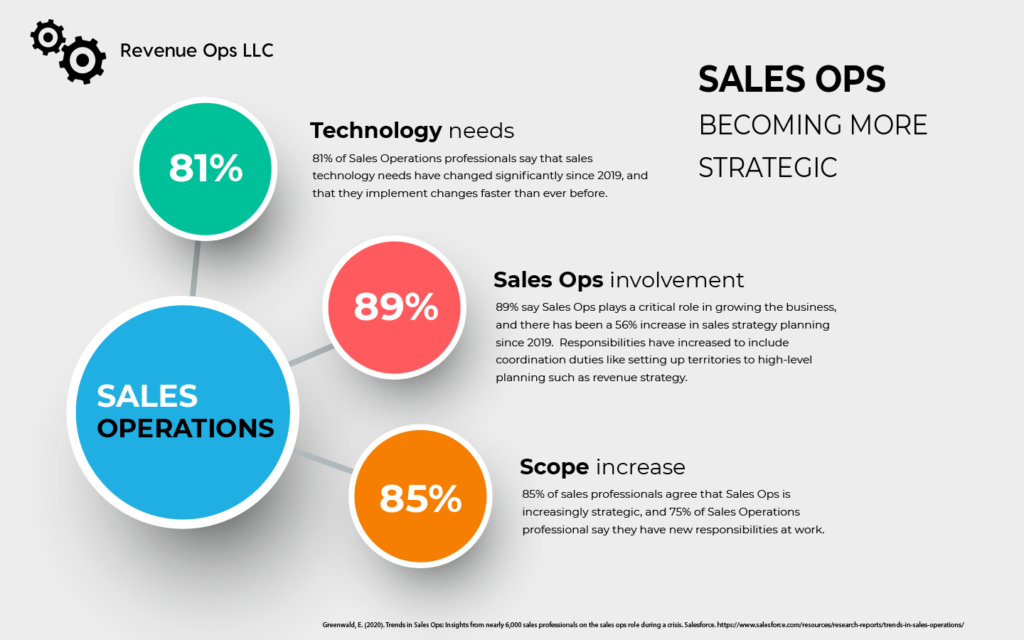Sales Ops: Becoming More Strategic Infographic
Sales Operations – what is it, and what does it mean to you?
Sales Operations, also known as Sales Ops, is a general term that refers to processes, technology, and activities that support the sales team and enable them to sell more efficiently and effectively. While Sales Ops has been part of the sales process for many years, it has only recently been recognized as a strategic powerhouse within the Revenue Operations function, helping to support and define the sales strategy.
Sales Ops is generally comprised of processes, technology, and data and analytics. Sales Ops professionals use these three pillars to create a strategy that makes it possible for the sales team to increase revenue while minimizing costs and streamlining tasks to complete more work with less effort.
Salesforce, the world’s leading customer relationship management (CRM) platform, surveyed nearly 6,000 sales professionals as part of their “State of Sales” report. They took some of that data and created a companion piece, “Trends in Sales Ops,” which is meant to help emphasize the growing importance of the Sales Ops function and help others understand its strategic importance.
This infographic contains some of the key metrics contained in that report highlights some of the ways that Sales Ops is becoming more strategic within organizations. The Sales Operations job description is expanding and there has been increased involvement in the following areas since 2019:
- Sales Strategy Planning
- Sales Performance Analysis
- Sales Strategy Coordination
- Sales Technology Management
- Sales Training Management
- Cross-functional Workstream Management
Why is this important? Roughly 78% of customers expect consistent interactions across departments, but a whopping 59% of customers say it generally feels like they’re communicating with separate departments, not one company. It’s important to unify and empower the various functional groups to create a uniform and organized customer experience. You can achieve this by involving all of the relevant parties in the process.

Sales Operations Demystified
Understanding the increasing role of Sales Ops within your business is critical to increasing your revenue. We are a team of strategic revenue operations experts who help our clients maximize their revenue through process improvements, technology enhancements, and meaningful data analysis. We are well-versed in sales enablement tools, marketing automation solutions, and digital analytics applications. Feel free to contact us if you’d like to learn more about our services or schedule a free initial consultation.





